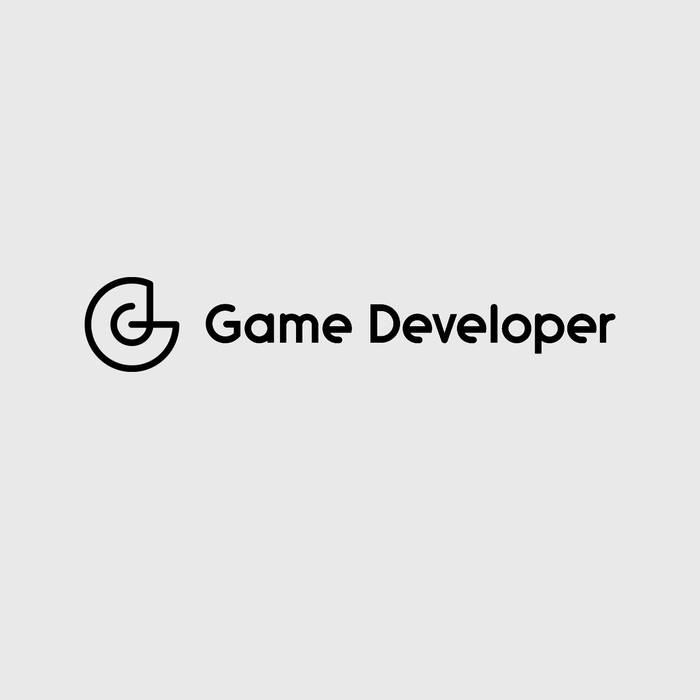I detail my first experience of a level design test for an industry position. I talk about how I dealt with the brief and what issues I had in creating it.

Recently, I had the utmost pleasure working on my first design test to become a junior level designer at Ubisoft Reflections. While I had worked to other briefs before, this was the first time I had worked on a project for a outsider company for a chance to work in the industry. For the benefit of others who are looking into working in the field and may be preparing themselves for a test like this, I’d like to share my experience, how I prepared for the task, what I did and how I communicated with them.
I learn of job openings in many different way, some I find on LinkedIn jobs, some from Gamasutra, some from my uni’s games groups run via societies or lecturers and some are sent straight to me from friends/contacts in the industry that I’ve built up. On this particular occasion, I believe I was scrolling through LinkedIn and found that Ubisoft Reflections had posted something on their feed and someone had reacted to it who were in my connections. As I always do, I click through to the company and follow them if I don’t already and then look at available jobs there. While there was a few I could apply for (Game Design, QA Testing, Level Design), I decided to put my focus in the level design one as I believe that’s the best one to showcase myself and it’d put me in a role I’d be very happy in.
What struck me in particular with Reflections was that they weren’t looking at cover letters which was unlike almost every role I had applied for. Not wanting to leave out a personal detail, I left this comment in the “Additional Notes” section.

I have to admit, I wish I had changed the ending a bit as it dropped the tone I was looking to keep. Additionally, it’s worth saying that you should only talk about games that you actually know about. If you haven’t played any of the company’s games then that’s perfectly fine (it also saves embarrassment if you apply for a support studio and then credit them entirely for a game they only came in to assist on rather than design/develop). Businesses aren’t specifically looking for die-hard fans of their games, they’re looking for people to enhance them and if you’ve got other favourite games then that’s fine. As long as you know some of their history, where they’re based and what they have worked on, you’ll be good.
The recruiter was interested enough and 17 days later, I got a response back saying that I had been accepted and they had sent a test with a brief on how they’d like to do it. I think it’s worth saying now that I was ecstatic. I was working at my retail job the day this happened and didn’t notice I had an email until I got home several hours later. I printed out the email and had to show my family- my hard work had been recognised and it was good enough for Reflections to give me a test! Regardless of what I thought of my work at that point, others saw potential and that for me was enough.
I’ve condensed the brief to avoid using Reflection’s assets and to reduce the time it’ll take to understand.
Brief:
Design a gameplay space and design a specific element of gameplay that will feature within said space for the Ghost Recon series.
If it works well, a Q&A session will be had, and you’ll be asked to present it.
The game:
(Links to videos of the gameplay and trailers)
Info:
Spend no more than 48 hours on the product. Have around 10 days to complete.
Part one – combat space:
Design a space that allows for 4-5 minutes of gameplay.
The space should be designed to allow for multiple ways to take it on and must allow up to 4 players in co-op. Consider these factors.
Believable in the context of the game.
Choice in size, entry and exits.
Must use NPCs, friendly or enemies.
Interactive elements such as switches, puzzles or traps can be included but remember the focus is replayability.
Part two – mission:
Design a mission that will feature within the space. The mission will require the player(s) to perform multiple actions to complete an objective.
There should be 2 different methods of completing a mission with at least 2 interactions per method. Example – Deactivate the explosive is the objective. One method includes opening a control panel cover and then pressing the power button to deactivate it.
Result in completing the objective? (Gameplay and narrative-wise).
Include any interactions but must provide descriptions of each interaction/how it is performed.
Consider additional elements that may affect the objective or the player may need to complete objective (having a drone etc.)
Deliverables
Part one – 2D and 3D layout:
(Most important piece of info ever about level design – fit with metrics given)
2D layout with annotations and reference images.
3D layout of the mission.
Use whatever method that bests illustrates your design intent i.e SketchUp, 3DS Max, Maya etc.
Part two – Mission design:
Level design document with mission, narrative and gameplay elements.
Metrics listed here etc.
I jumped to work as soon as I could- I hadn’t had such a rush of enthusiasm to do work since Covid started. First plan of action was to detail as many notes as I could. As I wasn’t familiar with Ghost Recon, I used the links they had provided me and wrote down gameplay, narrative and game space notes.

If you can’t read them, don’t worry- I can’t either!
I slept overnight and started brainstorming some ideas the next day. I started by mind mapping themes, sizes and gameplay elements. After finding a few references in other gameplay for size, I decided to go with a small space as that would give me around the 5 minute mark of gameplay I needed to match the brief. I found a theme that would be fun to work with and referenced some other games such as Goldeneye 007 that have kinda similar mechanics (stealth and multiple objectives). Relating games that you’ve played and finding ways that were similar helped me a lot through this process. I then designed a basic layout of the map with a bit of scale in mind.

Once figuring out the elements and I had a rough idea of the size and scale, I drew a clearer map:

With that out of the way, I just had to decide what the best way to showcase the level was. I had never used Google Sketchup before but I wasn’t prepared to relearn the other larger modelling programs at the time so that had to do. Honestly, I am super happy that I chose this approach as it was a very intuitive program to use and I intend to use it again for future projects.
While took me longer than what I would have wanted it too, I was happy with how the process was going. I did have to edit some things to help with scale, better fitting with the snowy theme of the map and more gameplay elements.
After including some more cover and adding some assets from the marketplace, I believed that I was done and I was happy with it. While I’m not sure whether it was the best idea to do still, I made some boxes that acted as cover and then added rocks into them to better fit with the theme of the map.

Using the boxes as guides, I dragged some rocks from the asset store in to better fit with the theme rather than using barrels or boxes of other descriptions.
Once I was happy with it, I found a great tool to render the image called Twilight Renderer V2 and I’d highly recommend using it for simple renders. After playing around with it for a bit, I got this as a final render:

Antenna Cradle’s final render.
I got to work photobashing some art of the render to fit it in with the location I had in mind.

It isn’t perfect but I think it gets the point across.
I made up a level design document as required by the brief which talks about a ton of stuff about the level. On a personal note, I would integrate my “Notes” section with other sections next time but as we were on a tight deadline, I just made sure everything was in.

The entire document is 1484 words – I love explaining things!
I made a readme with a link to the sketchfab model and a small explanation of my Powerpoint presentation to make sure that they knew to put it in slideshow mode before viewing the slides as there were animations included.
The presentation was my way of showcasing the level in a bitesized format and would have been displayed if I had made it to the Q&A stage. There are other ways of presenting levels. I’ve seen them typically done in a video format and with a flyby but for me personally, as someone that has presented a lot of things in this format worked best for me. Do what’s best for you (or what’s put in the brief!)

My presentation would take around 8-10 minutes to get through.
Lastly, for the presentation and to fit the brief which asked for a 2D layout, I made some diagrams that included the critical path, enemies, objectives and gameplay elements:
And of course, here’s the final model:

Don’t look underneath! I tried to keep it clean, promise!
A word of note, too. The way that Reflections currently handles their submissions is via SmartRecruiters which doesn’t allow you to upload model formats so make sure you upload your model to a website such as Sketchfab so that you can send it to them and make it a lot less painful!
I managed to send off the level with around 12 hours to go. I would have liked to have finished it earlier but I had other commitments. My advice is to prioritise it but not to forget about your studies/other work.
Unfortunately, I wasn’t selected for the job and I did ask for feedback but haven’t received any as of writing but I’ll certainly edit this post if there’s anything to add. As nice as it would be, at the end of the day, they’re busy and I get that. Fortunately, I’ve made some lovely friends through LinkedIn and university that have helped me improve for next time. Exactly what I’ll improve on for next time (for my level design) will be listed in my next post as I explain the gameplay/mission more.
For now, thank you very much for reading through this and hopefully this will help you if you’re facing your first level design test. Feel free to email me or message me on LinkedIn if you have any questions about my experience.
If you'd like to read more about my experiences, you can follow my blog here: mrkinchsblog.wordpress.com

Thank you to all these lovely people for providing their work for me to use!
Read more about:
BlogsAbout the Author(s)
You May Also Like
















